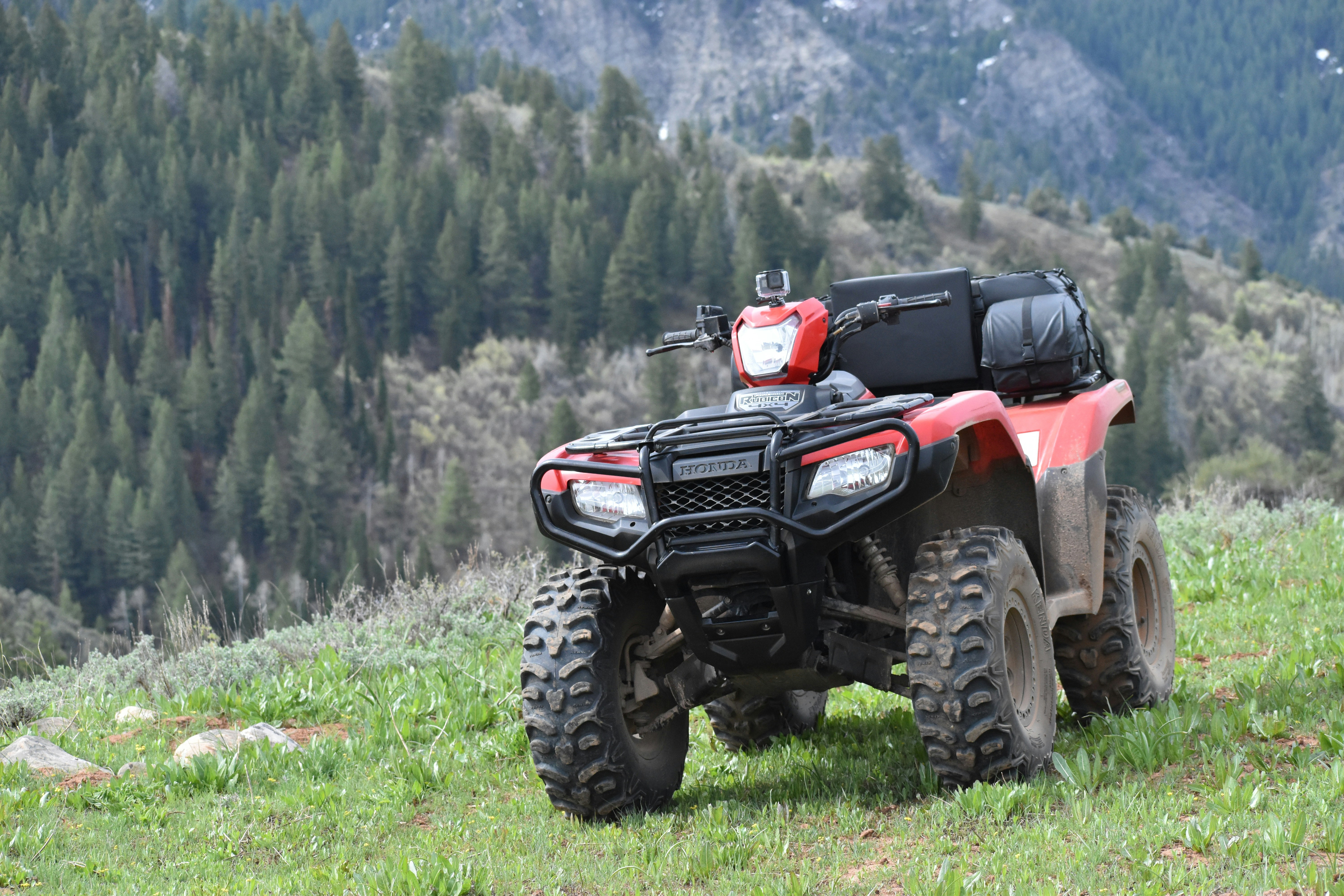Picture yourself gearing up for an exhilarating ride across rugged terrain on your trusty Polaris, only to discover that the Electronic Power Steering (EPS) is acting up—quite the mood dampener, right? Your off-road adventure shouldn’t face obstacles due to Polaris power steering (EPS) issues. In this guide for troubleshooting Polaris EPS Problems, you’ll find a handy guide loaded with tips and tricks to diagnose and fix those perplexing Polaris EPS issues, ensuring that your ride is as smooth and responsive as it should be. So grab your toolkit and let’s get that beast back to its full, agile glory!

Understanding Polaris Electronic Power Steering (EPS) Systems
Overview of Polaris EPS Functionality
You’ve probably noticed how much easier it is to steer your Polaris vehicle compared to non-EPS models, especially at lower speeds or when stationary. That ease of steering comes directly from the Polaris Electronic Power Steering (EPS) unit, which reduces the amount of physical effort you need to put into steering. Essentially, it uses an electric motor that provides assistance based on the steering input and vehicle speed, making your ride smoother and more comfortable.
Key Components of the Polaris Electronic Power Steering System
The key components of the Polaris EPS system include the steering wheel, steering column, torque sensor, electric motor, control module, and various electrical connectors and wiring. Each power steering component plays a crucial role in the system’s functionality; the sensor measures steering torque and the control module calculates the necessary assistance, while the electric motor delivers this assistance to the steering column.
Recognizing Common Power Steering Problems in Your Polaris
When there’s a hiccup in your EPS system, you’ll feel it. Common power steering problems include a suddenly stiff steering wheel in your Polaris, EPS warning lights on the dashboard, or unusual noises coming from the steering mechanism during operation. Sometimes, the steering might feel unevenly assisted, with varying levels of difficulty as you turn the wheel.
With all of this in mind, I’ll ask you the next question I think you should consider: How many miles will a Polaris Ranger last?
Diagnosing EPS Issues
Initial Diagnostic Steps
When you first notice something’s off with your steering, check the obvious before diving deep. Inspect for any visible damage to Polaris EPS system components, including the steering unit and make sure all the connections are tight. Look for signs of corrosion on connectors or any exposed wiring that might indicate electrical issues.
Diagnosing EPS Issues with On-Board Diagnostics (OBD)
Your Polaris vehicle is equipped with onboard diagnostics that can make your troubleshooting life a bit easier. By connecting a compatible scanner to the OBD port, you can diagnose Polaris EPS light issues, you can pull diagnostic trouble codes that will help pinpoint the issue. Just follow the instructions for your specific scanner and vehicle model.
Interpreting Diagnostic Trouble Codes (DTC)
Once you have those trouble codes, it’s time to make sense of them. Each code corresponds to a specific issue within the EPS system. Your owner’s manual or a repair guide will usually have a list of these codes and their meanings, so you can begin targeted troubleshooting based on the diagnostics.
Electrical Troubleshooting
Inspecting Wiring and Connectors
Get up close and personal with the system’s wiring and connectors. Look for any signs of wear, fraying wires, or loose connections that might interrupt the flow of electricity. Check for corrosion or dirt that could create a bad connection and clean or replace parts as necessary.
Ensuring Optimal Performance: Checking Your Polaris’s Battery Voltage for EPS Functionality
Your Polaris’s battery isn’t just there to start the engine; it also powers the EPS. Use a voltmeter to ensure the battery is fully charged and operating at the proper voltage. A weak or dying battery can lead to inconsistent EPS function.
Verifying the Fuse and Relay Conditions
The EPS system has designated fuses and relays that protect it from electrical surges. Find the EPS fuse and relay in your vehicle’s fuse box (refer to the manual if you’re unsure where it is). Examine the power steering fuse for any signs of burning or damage in your Polaris, and test the relay with a multimeter to ensure it’s functioning correctly.
Mechanical Troubleshooting
Steering Column Inspection
The physical link between your steering wheel and the vehicle’s wheels is the steering column. Ensure the steering column isn’t bent or damaged, affecting the EPS’s responsiveness, which could throw off the system. Also, check for any obstructions or debris that may hinder movement in the steering system.
Torque Sensor Function Tests
The torque sensor is key to how much assist the EPS gives you; if it’s not reading correctly, your steering will be all over the place. If you have the skills and equipment, performing a function test on the sensor can reveal if it’s working as intended or if it needs adjustment or replacement.
Checking for Mechanical Binding
Ensure nothing is physically blocking or binding in the system, which can cause the EPS to work harder than it should or even not at all. Look at the steering linkage and wheel assemblies for any blockages or signs of damage.

EPS Control Module Issues
Identifying Control Module Failures
The brain behind the EPS magic is the control module. But when it fails, you’ll notice. A complete loss of power steering assist or intermittent EPS functionality are telltale signs. Some diagnostic tools can run specific tests on the control module to determine if it’s the culprit.
Related: Polaris Ranger Turf Mode Problems Fixed
How to Reset or Reprogram Your Polaris EPS Control Module for Better Steering Control
Occasionally, resetting your Polaris EPS control module can resolve steering issues, or a new set of programming all together. This might involve disconnecting the battery or using a diagnostic tool to reset the system. Always follow the recommended procedure to avoid causing any additional issues.
When to Consider Control Module Replacement
If resetting or reprogramming doesn’t work, it might be time for a replacement. This can be a complex and potentially expensive route, so make sure you’ve exhausted other possibilities before deciding to go this way.
Steering Assist Motor Problems
Diagnosing Motor Malfunctions
The motor in your EPS system can run into its own set of issues, from electrical faults to physical damage. If you’ve observed reduced power steering assist or unusual noises from the EPS motor, it could be the motor struggling to do its job.
Motor Electrical Tests
To troubleshoot the motor, you can run some electrical tests using a multimeter. Checking for proper voltage at the motor and testing the resistance can tell you a lot about its health. Be sure to compare your findings with the specifications for your model.
Deciding Between Repair vs. Replacement
Repairing an EPS motor is not always practical or cost-effective. After pinpointing the motor as the issue, weigh the costs and potential future problems of a repair against the price of a new or refurbished unit.
Solving Steering Issues: A Guide to Troubleshooting Polaris EPS Feedback
Assessing Excessive Steering Effort
If you find yourself needing to bench-press just to make a turn, there’s definitely an EPS issue. Excessive effort in steering your Polaris could indicate various power steering problems, from faulty sensors to a weak motor, so you’ll need to go through a process of elimination to find the cause.
Dealing with Intermittent Steering Response
Intermittent steering response – where the steering assist comes and goes – can be particularly frustrating. This intermittent steering response could signal an electrical issue in the EPS system, like a loose connector or a glitch in the control module.
Eliminating Unusual Noises During Operation
Hearing new and unusual noises when you turn the wheel isn’t part of the normal soundtrack of your drive. Groans, clicks, or whining from the steering system could indicate low EPS fluid level (in hydraulic systems), mechanical binding, or a failing EPS motor.
Software and Calibration Issues
Updating Polaris EPS Software
Like any modern technology, the software in your EPS system may need updates to function correctly. If there’s new firmware for the Polaris EPS system, updating your system might resolve some elusive steering issues and enhance steering accuracy.
Calibrating Steering Angle Sensor
Accurate calibration of the Polaris’s steering angle sensor ensures optimal EPS performance, to ensure it properly informs the EPS system of the steering wheel’s position. If the calibration is off, the system won’t provide the right amount of assist. Follow the manufacturer’s procedure to recalibrate the sensor.
Addressing Software-related Steering Irregularities
Sometimes, strange steering behaviors are due to software glitches. If troubleshooting doesn’t reveal any hardware issues, consider if a software anomaly could be the root cause. A reprogramming might be required to sort things out.
Read more: Worst Polaris Ranger Years to Avoid (+The Best)

Understanding External Factors That Impact Your Polaris’s Power Steering Performance
The Impact of Extreme Temperatures
Extreme temperatures can significantly affect your Polaris power steering (EPS) system’s efficiency. In the cold, components might move more sluggishly, while extreme heat could cause overheating or increased wear and tear.
Dirt, Water and Foreign Material Ingress
Off-roading can expose your Polaris’s EPS unit to dirt, water, and other damaging materials. Dirt, water, and other debris can cause electrical shorts or mechanical blockages, so keep your system clean and check regularly for any contamination.
Modifications that may Influence EPS Performance
Modifications to your Polaris, especially to the steering or suspension, can impact EPS performance. Consider how changes to your vehicle might affect Polaris steering and EPS system dynamics, and always keep the EPS in mind when customizing your vehicle.

Resources and Further Reading
Manuals and Technical Guides
The best starting point when you’re dealing with EPS issues is the owner’s manual and any available technical guides for your vehicle. These sources contain a wealth of information specific to your model, including troubleshooting steps and technical specifications.
Online Forums and Communities
If you’re stuck or need advice, online forums and communities can be a lifeline. There are many experienced Polaris owners and technicians online who are happy to share their knowledge and help you through your EPS troubles.
Videos and Tutorials for EPS Troubleshooting
Sometimes, seeing is understanding. Look for videos and tutorials that walk you through the troubleshooting process. Visual aids can be extremely helpful in understanding what to do and how to do it accurately.
Tackling EPS issues on your Polaris can seem daunting, but with a systematic approach and the right resources, you can diagnose and resolve many common problems yourself. Remember to work safely, take your time, and don’t be afraid to seek help when you need it. Happy troubleshooting!
More Ranger problems:
> Worst Polaris Ranger Transmission Problems To Know
> Dreaded Polaris Ranger 700 XP Common Problems Get Revealed
> Full Guide To Identifying Polaris Ranger Check Engine Codes
> Polaris Ranger Overheating Solutions and Radiator Issue Fixes
> The Definitive Polaris Ranger 500 Troubleshooting Guide
> Polaris Ranger 900 XP Problems Get Revealed (Overview)


Leave a Reply